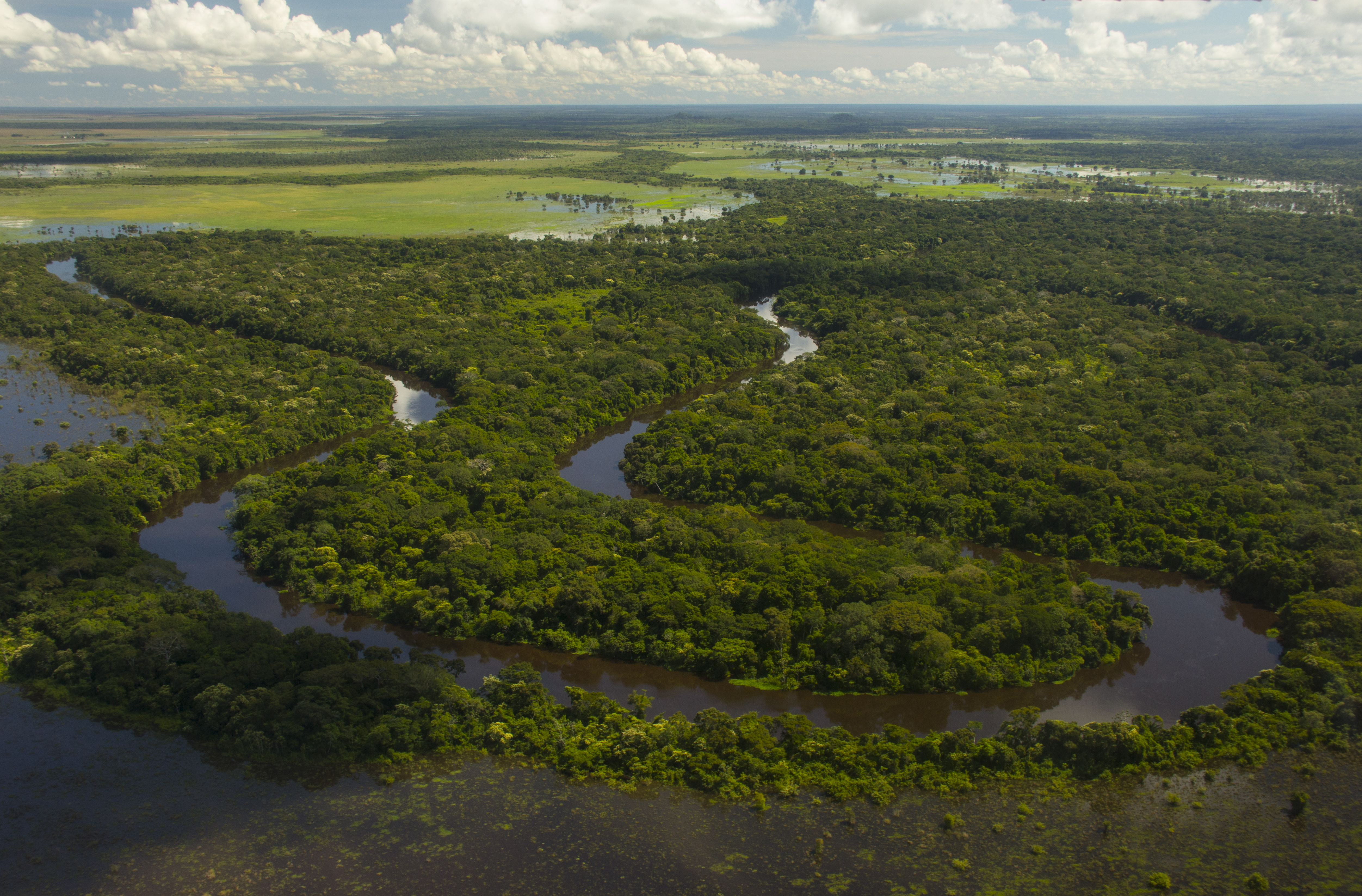11. Conclusion
Marcelo Arze / FAN, 2014.
If we ask ourselves what are the main conclusions we wish to highlight in “Amazonia Under Pressure”, there is no question but that we need to emphasize a fact common to the results presented in all the chapters: in the last decade there has been an accelerated rate of growth of Pressures and Threats, as well as their Consequences and Symptoms in Amazonia. Here is some of the evidence that supports this conclusion:
---> The synthesis map shows that 7% of the Amazon territory is under “very high” pressure and 26% under “high”. The areas with the highest pressure are located in the peripheral areas of the biome, in areas of mountains and foothills to the west, especially in Ecuador, in northern Venezuela, and in the south of the region in Brasil.
---> Road density in Amazonia, calculated by road and territorial extent, is 18.7 km²/1,000 km². The countries that are at the forefront of this expansion are Colombia, Perú and Venezuela.
---> Hydroelectric plants, inside the boundaries of the Amazon biome in 2020, have increased by 4%, to a total of 177 hydroelectric plants. The increase was more prominent among UHEs, which increased by 47% compared to 2012, going from 51 to 75 in 2020.
---> Between 2012 and 2019, the Amazon region recorded an increase in oil blocks. However, in the same period, the land area occupied by this sector was reduced in all of its phases, though this does not necessarily translate into a decrease in these industries in Amazonia, but rather in changes to official databases.
---> In a similar fashion to the oil sector, areas with mining interest increased from 52,974 in 2012 to 84,767 in 2020; however, there was a reduction of 11% (188,374 km²) of land occupied by this activity during the period analyzed.
---> Agricultural activity is responsible for 84% of deforestation in Amazonia, according to RAISG’s analysis. Since 2015, deforestation in Amazonia has begun rising again. In 2018, more than 35,000 km² of forest were cut down, the equivalent of almost half Panama. • In 2020 RAISG recorded 4,472 localities in Amazonia where illegal mining is practiced, 87% of them in the active phase of exploitation.
---> Between 2001 and 2019, 13% of Amazonia was affected by fire. This is equivalent to an area of 1.1 million km² or a territory similar to that of Bolivia.

Iténez Natural Integrated Management Area Departental Park, Beni, Bolivia. Marcelo Arze / FAN, 2014.
RAISG analyses suggest that more than half the units of analysis in Amazonia (65.8%) are subject to some type of permanent or ongoing pressure, while more than half (52%) register symptoms and consequences of anthropogenic activity, independently or together with loss of carbon, areas burned, deforestation or converted natural areas. These impacts are lower within PNAs and ITs, demonstrating their key role in conservation in the region.
All these indicators show that Amazonia, its biodiversity, and its indigenous peoples are experiencing a critical moment, a rate of degradation unprecedented in its history. It emphasises the importance this giant has for the survival not only of the indigenous peoples who inhabit it, but also of the wider society, as it is, as we have seen, a large-scale regulator of the global climate. The main agenda of the group is consistent with the conclusions reached by RAISG after months of studies: to avoid the collapse of environmental services in Amazonia, it is necessary to stop deforestation immediately and to initiate restoration processes that reverse the impacts it has endured for decades.
Advancing understanding of continent-wide connections and climate regulation makes this need even more pressing. Society and its elected officials need to understand that not only environmental damage, but also social and economic damage, is taking place. Among the most recent RAISG studies is the scientific article on carbon stocks in Amazonia.
In other words, thanks to indigenous peoples, social leaders, some political leaders and the pioneering spirit of scientists, we now have conserved forests, often sustainably managed. These are essential for their inhabitants and provide vital services for those who live in cities near and far. This is not the time to throw away this achievement.
